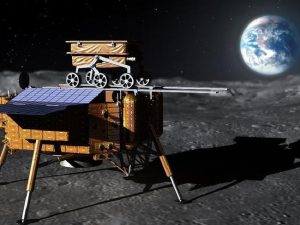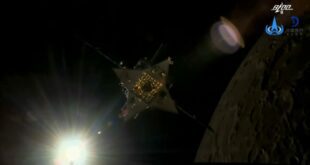
China successfully launched its Chang’e 4 lunar probe on Saturday, 8 December 2018, as part of its overall goal to establish itself as a global space power and spread its strategic influence throughout Eurasia.
The mission was launched via a Long March 3B rocket, which carries a lunar probe from the Xichang Satellite Launch Centre in Sichuan Province in southwestern China, according to the official Xinhua News Agency. Its goal is to explore the far side of the Moon.
The moon’s far side, also known as the dark side because it faces away from Earth, is largely unexplored and remains comparatively unknown. It has a different composition than sites on the near side, where previous missions have landed. China hopes to be the first country to make a soft landing.
Chang’e 4 is a combination lander-rover which will explore both above and below the lunar surface after arriving at the South Pole-Aitken basin’s Von Karman crater following a 27-day journey.
It will also perform radio-astronomical studies. Since the moon’s far side always faces away from Earth, these studies will be “free from interference from our planet’s ionosphere, human-made radio frequencies and auroral radiation noise,” space industry expert Leonard David wrote on the website Space.com.
To facilitate communication between controllers on Earth and the Chang’e 4 mission, China launched a relay satellite, named Queqiao, in May.
If the Chang’e 4 mission is successful, it could move the Chinese space programme toward a leading position in the key area of lunar exploration.
Five years ago, China successfully landed its Yutu rover on the Moon; it plans to send its Chang’e 5 probe to the Moon next year, with the goal of its returning to Earth with samples, which has not been done since 1976.
China is also considering a crewed mission. It conducted its first crewed space mission in 2003; it was the third country — behind Russia and the U.S. — to do so. China has launched two space stations into orbit, one of which is still operating; they are a precursor to a more than 60-ton space station due to come online in 2022. The launch of a Mars rover is planned for the mid-2020s.
China’s space programme has benefited from cooperation with Russia and European nations, although it was excluded from the 420-ton International Space Station (ISS), mainly due to U.S. legislation barring such cooperation amid concerns over its strong military connections. Its programme also suffered a rare setback last year with the failed launch of its Long March 5 rocket.





